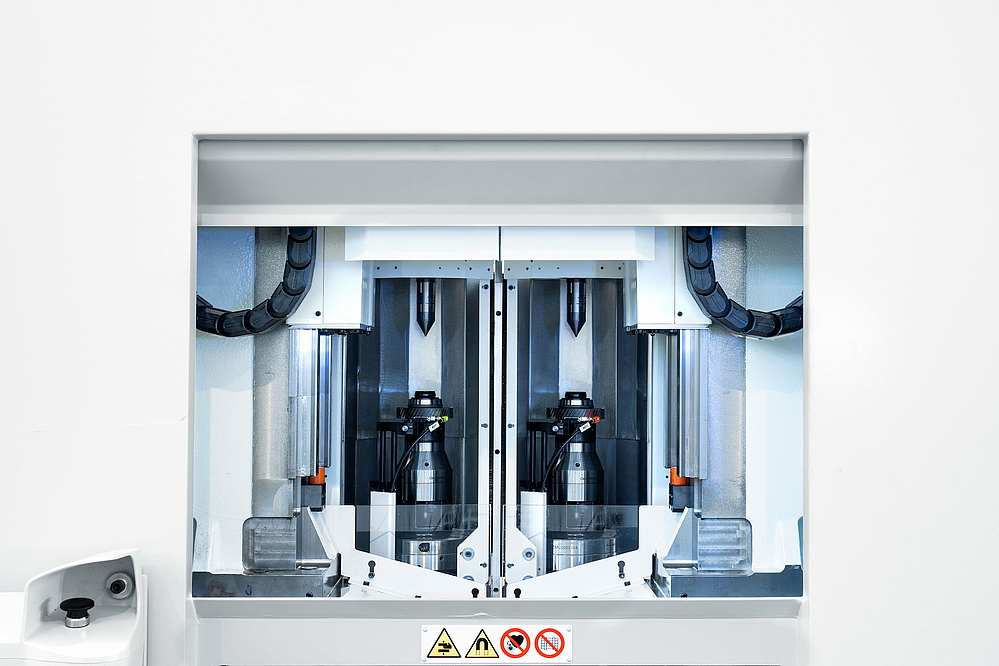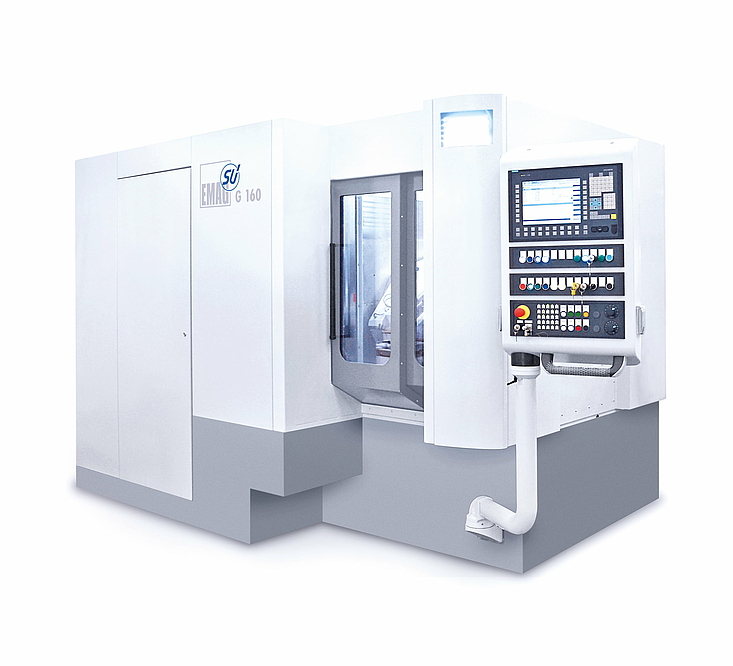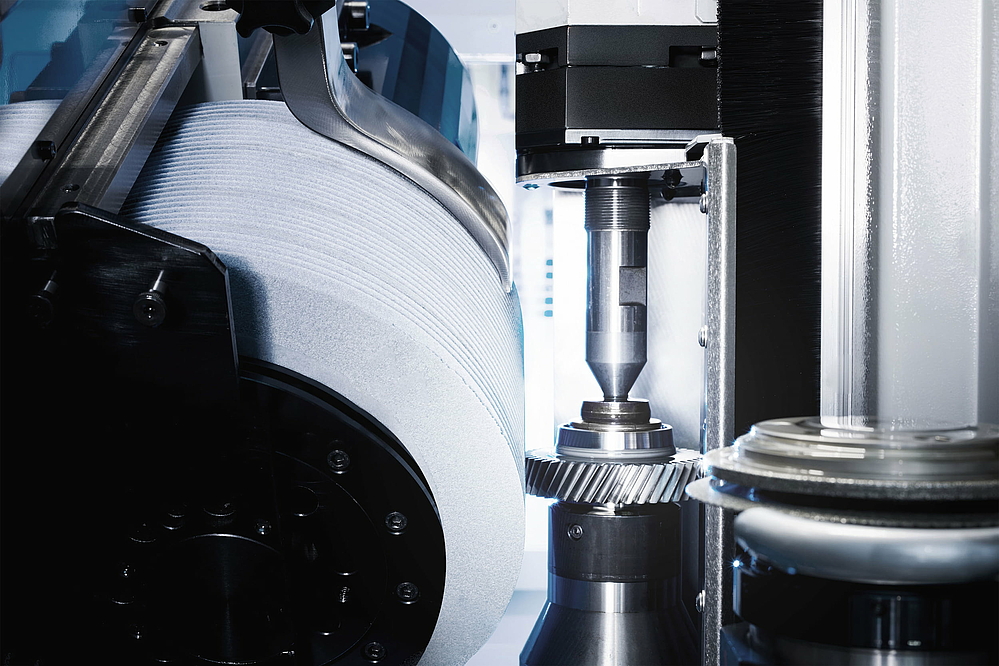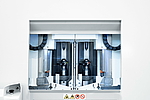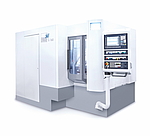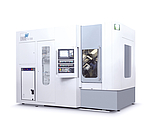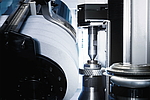05/17/2023 - Oliver Hagenlocher - Press
Tooth Flank Grinding with EMAG SU: Perfect Surface Finishes and Very Short Cycle Times Enable Electric Mobility
Gear grinding is currently attracting a lot of attention, especially in the production of components for electric drives. Production planners are demanding new solutions for a perfect surface that assures their necessarily smooth running at high speeds and heavy torque loads. To see how a high-tech niche machine builder implements these requirements, one need look no further than EMAG SU “tooth flank grinding” machines. The gear grinding machine specialist, based near Bologna Italy, developed the G 160 model, for example, which features a special “virtual” axis concept for microscopically near-perfect surfaces. At the same time, the integrated material handling technology keeps the cycle times down to a minimum. Take a look at the concept details that makes EMAG SU such an outstanding gear tooth flank grinding solution, as well as their many other winning designs.
Images
Electromobility is booming and the competition to have the best solution is accelerating. Almost all automotive manufacturers launched new EV models in 2022. What does this mean for the production planning by OEMs and suppliers? “On the one hand, they have to effectively deal with growing production quantities, yet, still have to guarantee an ever-increasing level of quality, because the high torque load of an EV electric motor results in special requirements for tight tolerance dimensions and surface finish,” explains Alexander Morhard, Technical Gear Support Specialist with EMAG SU. “This development is particularly noticeable in the machining of tooth flanks on shafts and gears. Here it is important to achieve dimensionally accurate results in the micron (µm) range, because even minimal ripple in the surface finishing of the components can cause interference noise in the drive performance.”
G 160: minimal chip-to-chip times
With a wide range of technological innovations, EMAG SU demonstrates how quality can be improved in this extremely precise application. The company offers a large range of machine tools that cover the entire gear tooth cutting process. Tooth flank grinding, with the alternative cornerstone procedures of “generating grinding” and “profile grinding” is a key area of application. With “generating grinding,” for example, the gear geometry is continuously “generated” by a combination of multi-axes, high performance machine motions and well-maintained grinding wheels. EMAG SU’s G 160 model is the fastest machine on the market for components up to module 3 with a maximum outside diameter of 160 mm. The G 160 speed is made possible by an innovative slide axis concept with two parallel workpiece tables that take turns moving at high speed (with the help of durable, high performance linear motors) to the grinding wheel. During the time that one component is being machined, the loading robot inserts a blank into the other spindle, after first unloading the completed part, as needed. Self-centering alignment, or “meshing,” of the grinding wheel to the rough-cut gear component takes place directly on the workpiece spindle, at load position, in parallel with the main machining operation. This results in a chip-to-chip time between the grinding processes of only 1.6 seconds (a very small value compared to grinding machines with turntables, where in some cases up to five seconds pass for the same process). Here it is important to note that the actual grinding time needed for a typical component, such as a planetary gear wheel, is only about 10 seconds. The difference between the chip-to-chip times between grinding is therefore a real game changer. The floor-to-floor time is significantly reduced, by about 3 seconds (more than 20%), and the output quantity is massively increased. This is a decisive factor in the planning of high-volume manufacturing in the growing electromobility market.
Axis concept prevents “ghost frequencies” on the surface
What also sets apart the technology of EMAG SU is the exceptional surface qualities that the innovative axis concept that the
G 160 makes possible. Contrary to many other generating grinding machines, it has no tangential axis. Instead, the Y- and Z-axis “generate” a “virtual” tangential axis through a simultaneous movement. As a result, the point of contact between the grinding wheel and workpiece is around 100 mm closer to the pivot point of the swiveling axis, which is beneficial for the swiveling behavior during the grinding process. The wheel point of contact varies, thereby smoothing the gear form for better "mesh" and higher bearing ratios. The result is visible in the surface structure of the finished component, as the “ghost frequencies” in the micron range mentioned above vanish almost entirely. Additionally, gear form Profile Deviation is very low, as measured by the FFA value (force-field approximation). The improved finish and form of the gears is due in no small part to the high rigidity of the G 160 and the innovative techniques of EMAG SU. Numerous shafts and gears wheels of the electric drive systems benefit from this quality.
G 250: short cycle times – maximum flexibility
Another interesting machine concept can be found in the G 250 machine of EMAG SU, which is suitable for components up to module 7, with an outside diameter of 250 mm. Axle drive gears, gear wheels or shafts with a maximum length of 550 mm can be produced with this solution, using generating grinding or profile grinding, with short cycle times. To this end, the machine is equipped with 2 table spindles to minimize idle time during the manufacturing process. “Additionally, the flexibility of the machine was very important to us,” explains Morhard. “For example, the G 250 can also be equipped with very small grinding wheels and worms.” The G 250 HS variant also has a high-speed grinding head, which makes 20,000 rotations per minute possible, if a small grinding worm is used. Other advantages of this machine concept:
- Generating grinding and profile grinding are performed on the same main grinding spindle, so that the machine does not suffer from heat development (like when auxiliary spindles are used for profile grinding). Additionally, the machine can be re-tooled for the alternative procedure within a matter of minutes.
- Generating grinding can also be used for machining workpieces with interfering contours, by using generating worms with a root diameter up to 68 mm. This results in very short grinding times. All other components can be finished with a small profile grinding wheel, with a size of up to 30 mm.
- Centering takes place in the loading position, in parallel with the main machining operation.
- The integrated dressing unit ensures process reliability.
For large components in trucks or in general gear manufacturing, the cost-efficient G 400 rounds off the upper end of EMAG SU’s product range for generating grinding. It is equipped with a tool table for components with a max. diameter of 400 mm and a shaft length of up to 750 mm. A feature that is important to many users: The machine can also be loaded from above, because the housing has an over-the-corner door.
Increasingly strengthening the market by contributing strengths
Short chip-to-chip times, intelligent axis concepts, thermal and mechanical stability, as well as high “user-friendliness,” including self-explanatory, parametric input windows. With these quality characteristics, EMAG SU boosts the performance of tooth flank grinding procedures. To accommodate various grinding wheel sizes and types, a variety of spindles with the corresponding power and performance is available. Additionally, the technology can easily be combined with different automation technologies. “We consider ourselves ideally equipped to supply machines for the grinding tasks needed in the field of electric mobility, as shown by a well-known French automotive manufacturer currently successfully using several EMAG SU grinding machines to generate gears,” summarizes Morhard. “In the coming years, we want to continuously improve our contribution to the global requirement for precision gear grinding machines for the ever-increasing quality demands for electric vehicles.”
Contact


